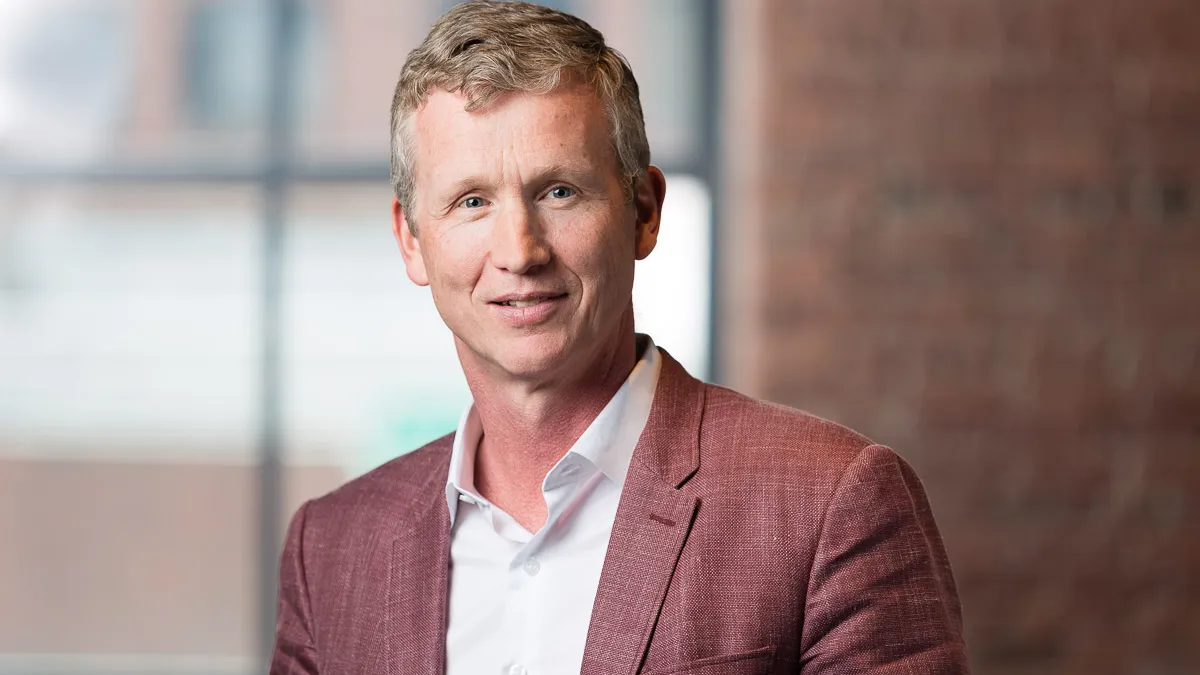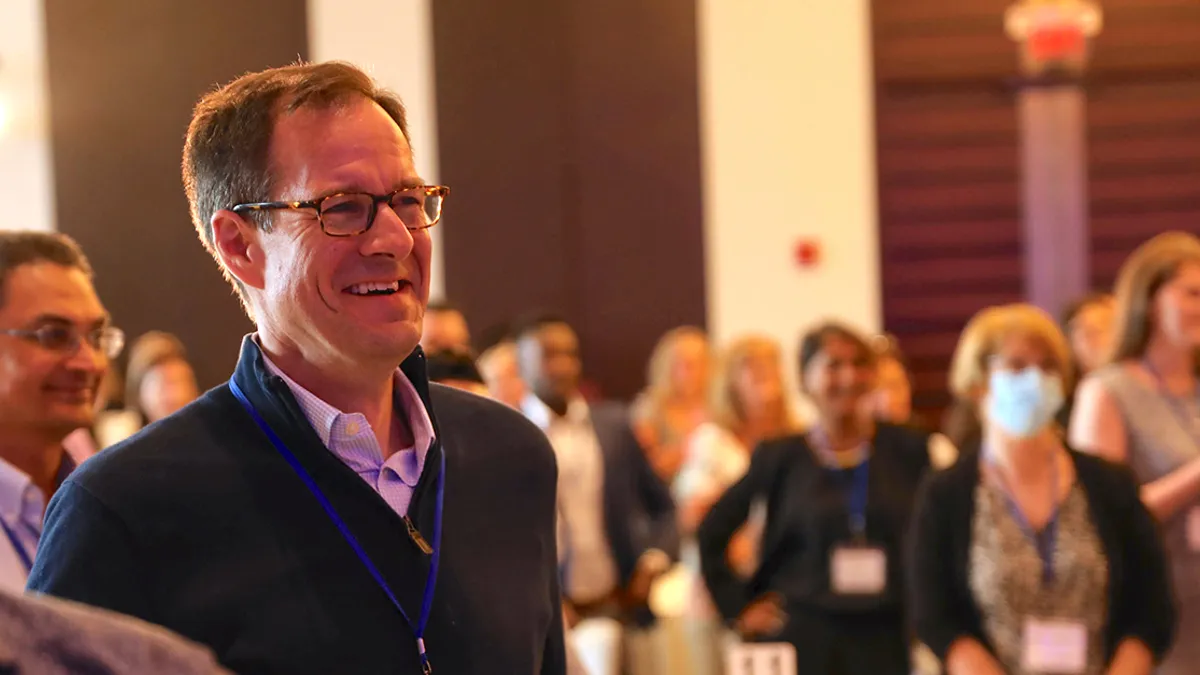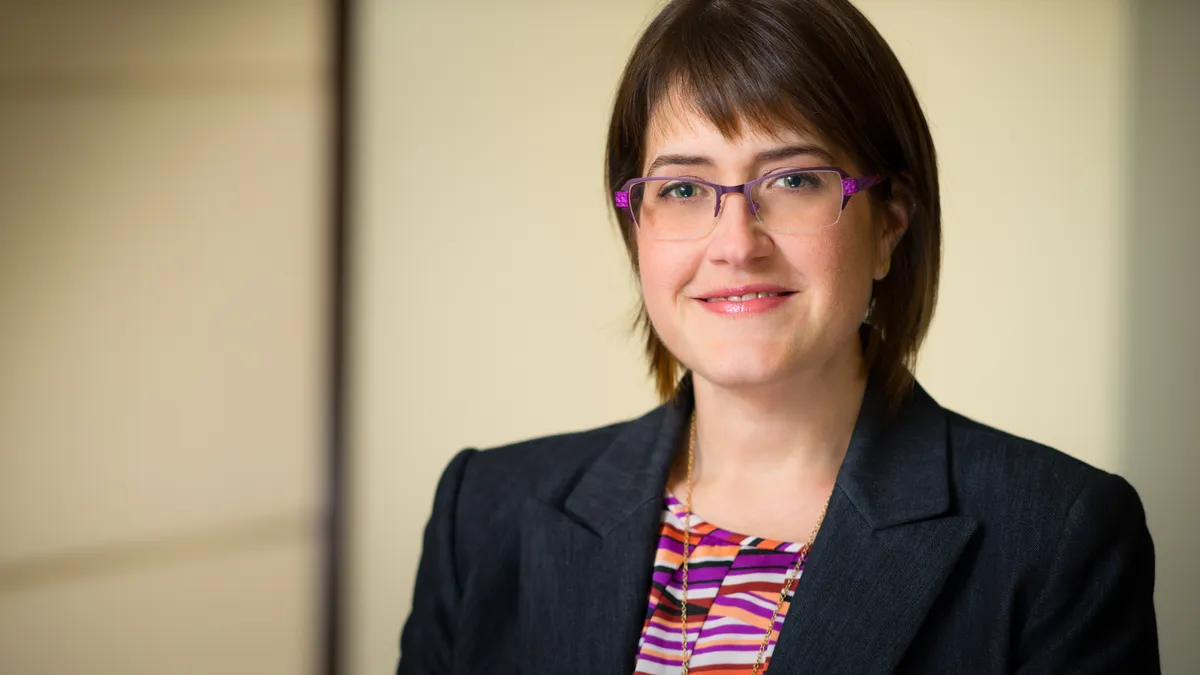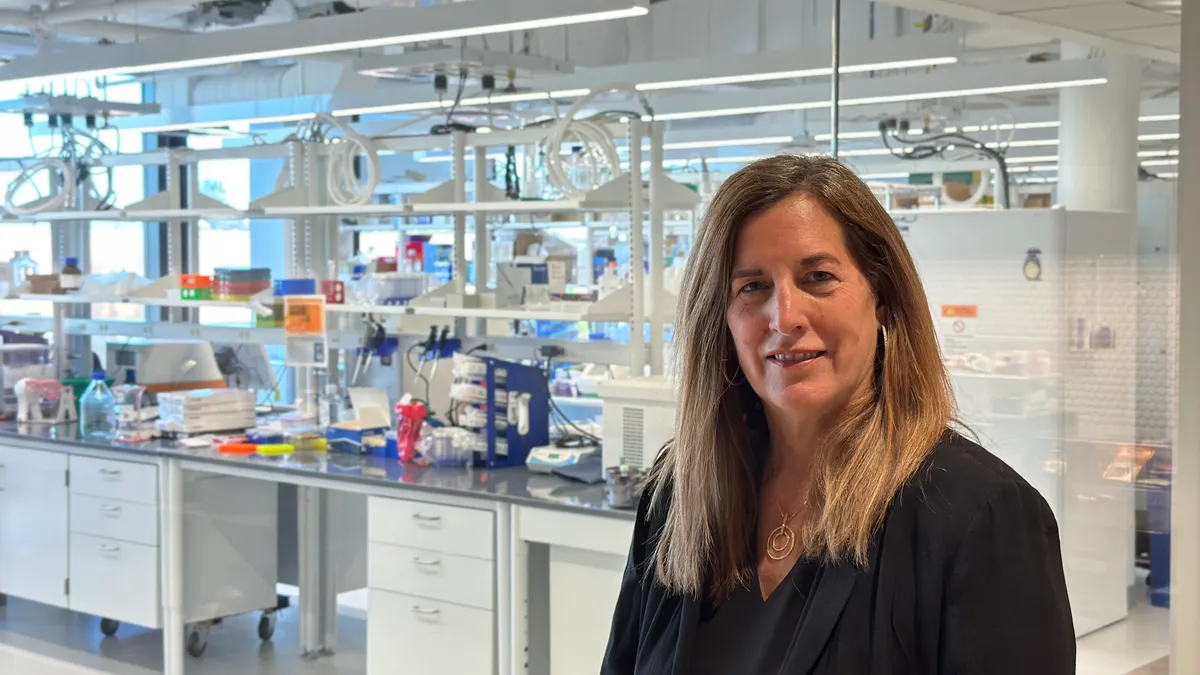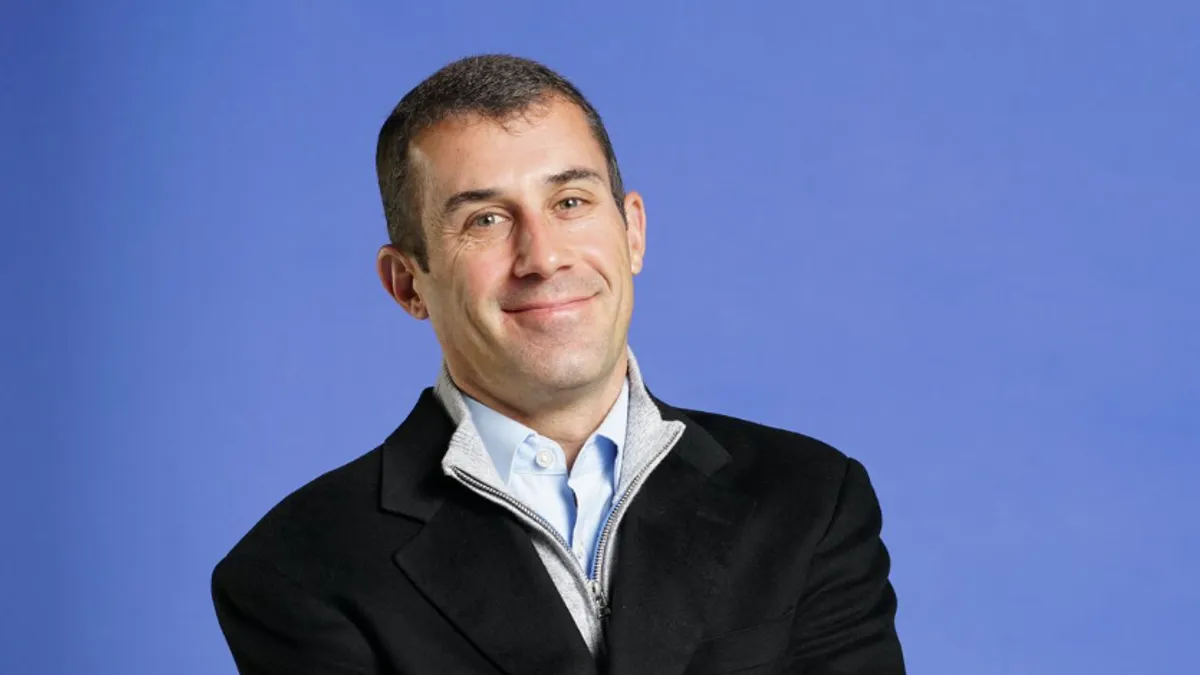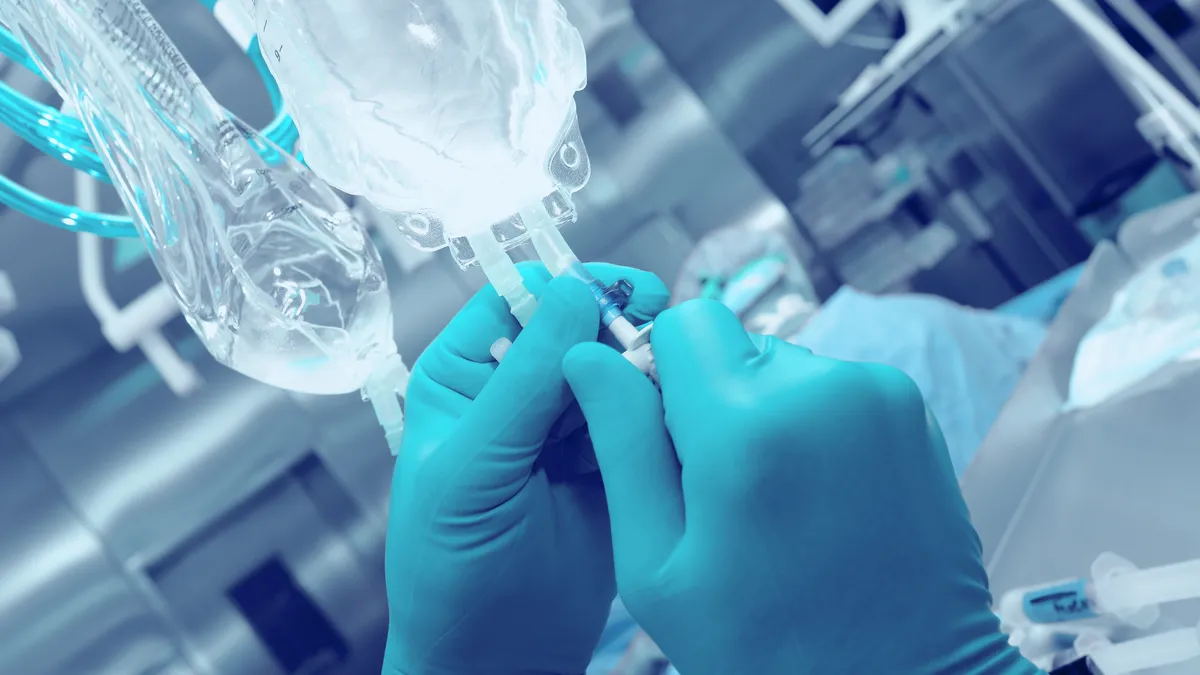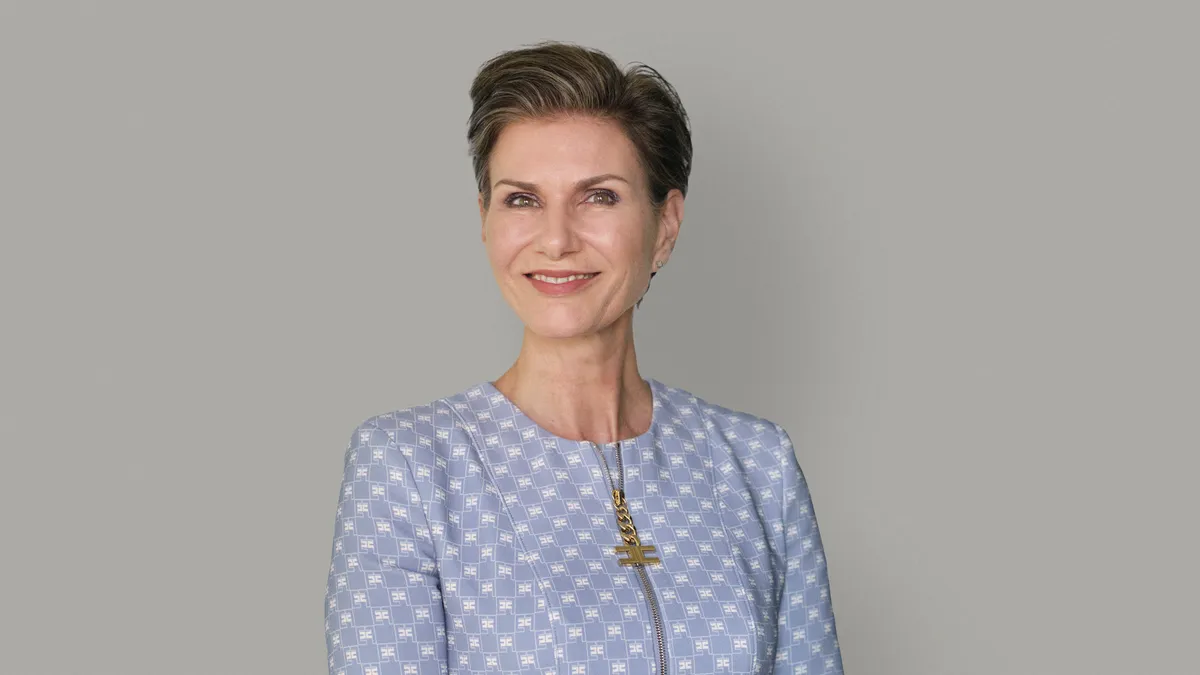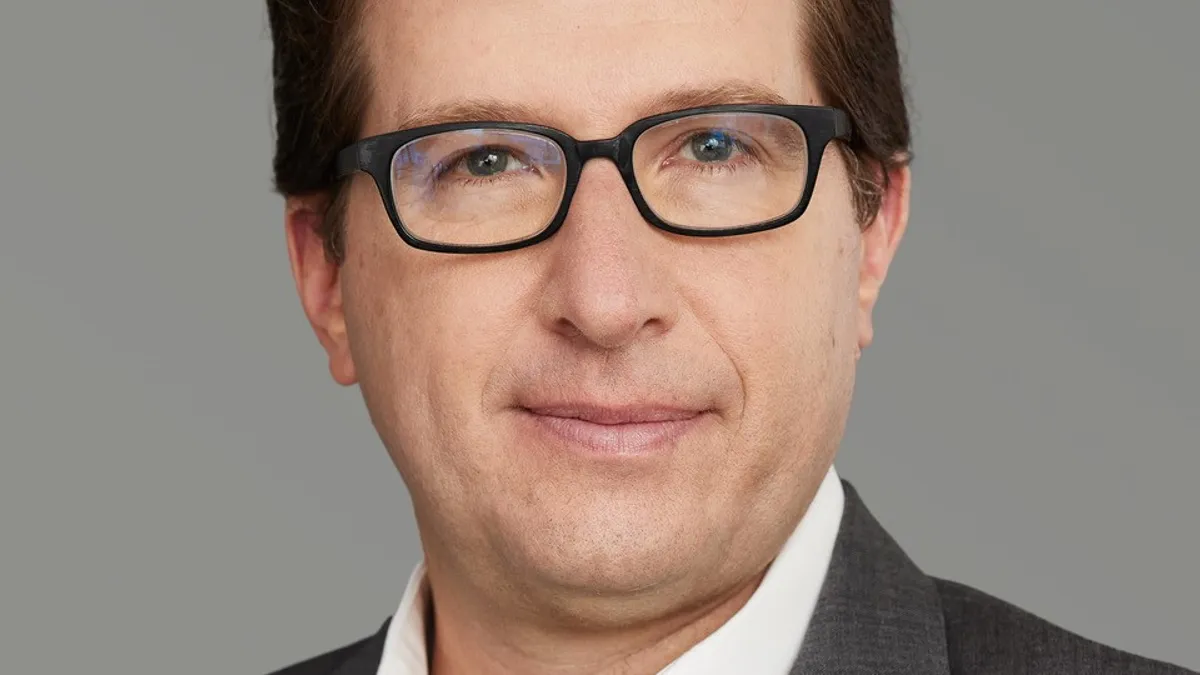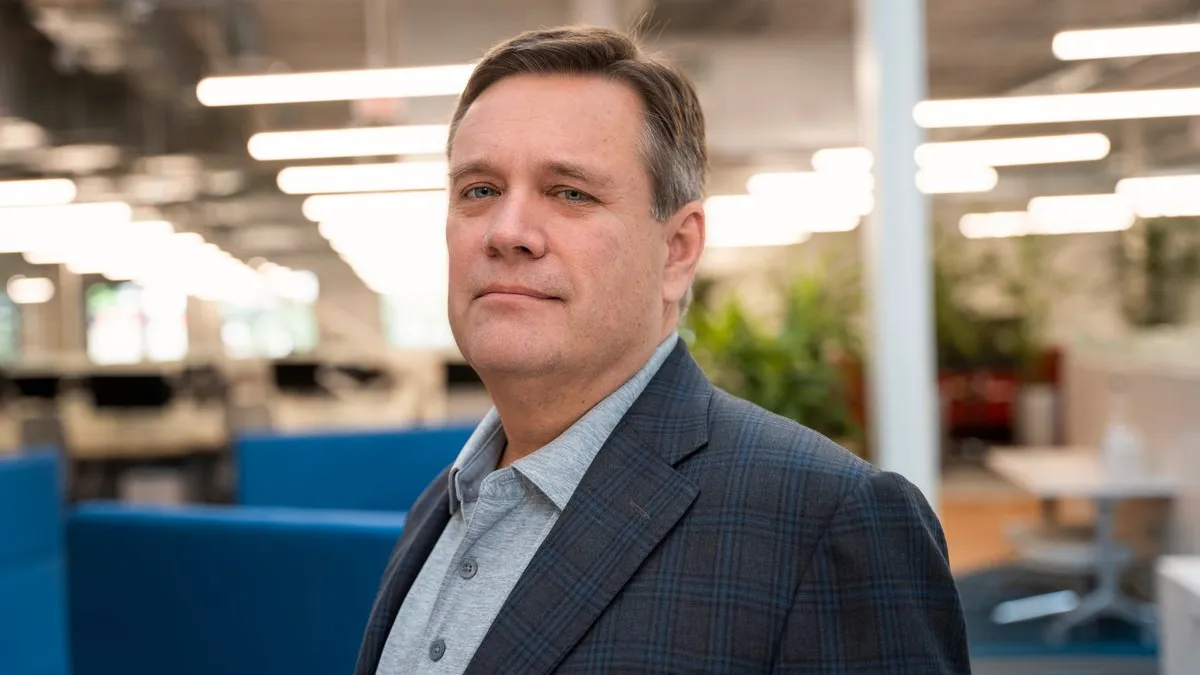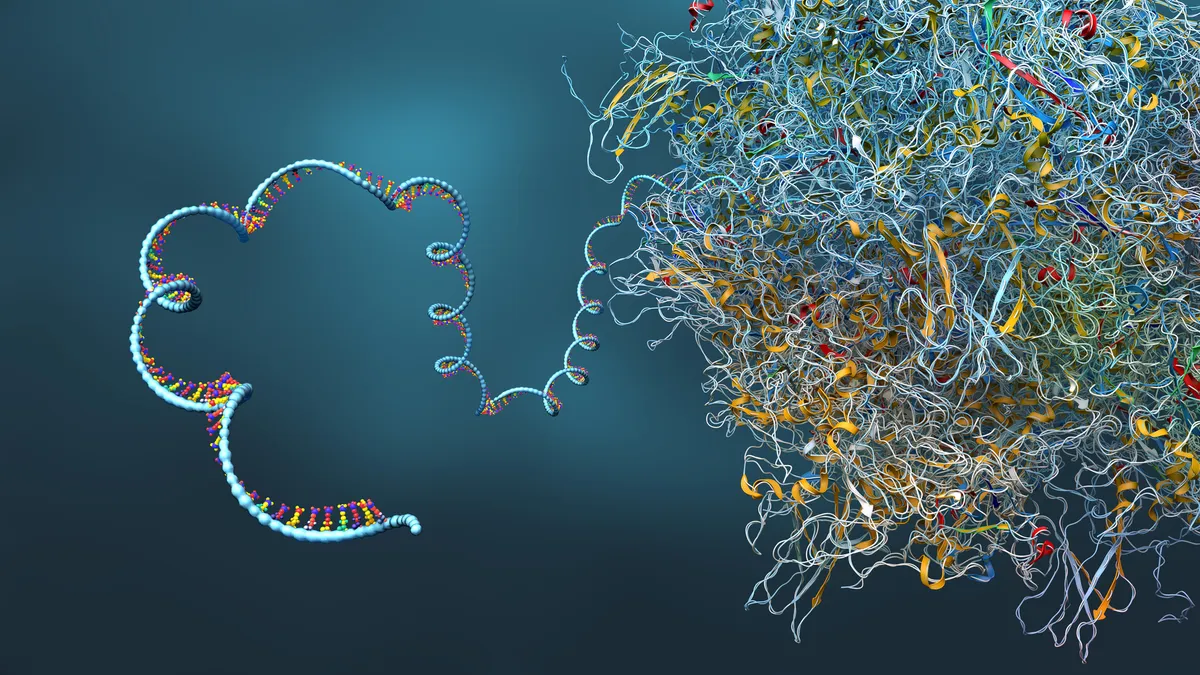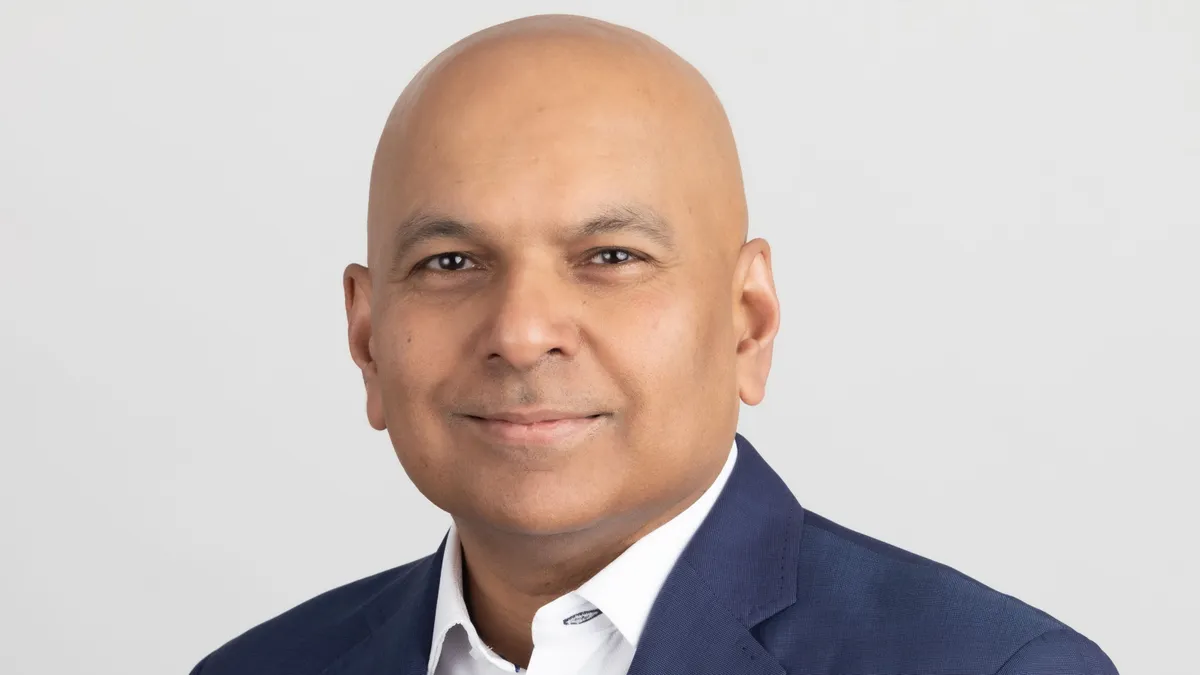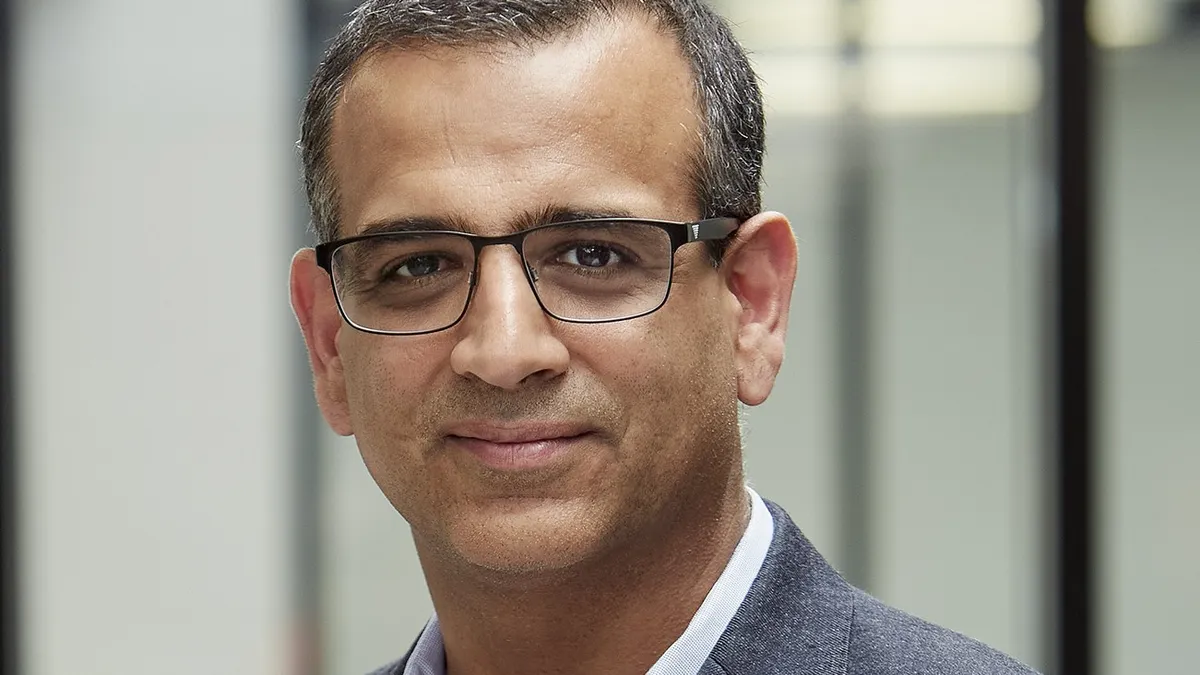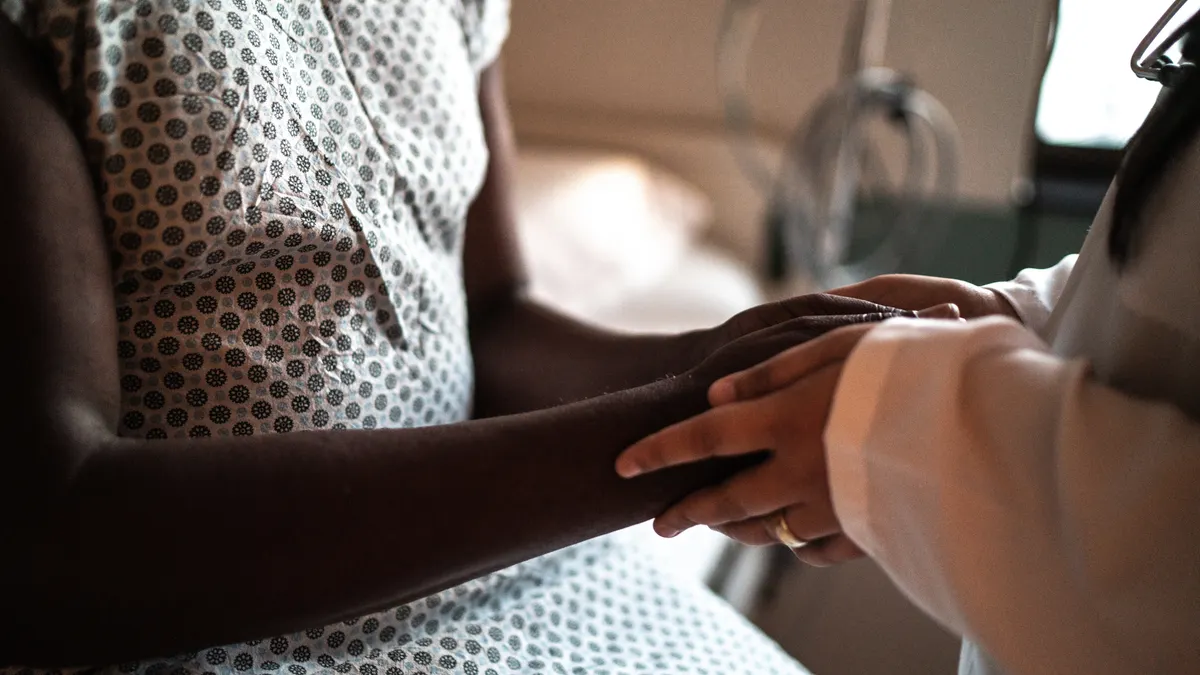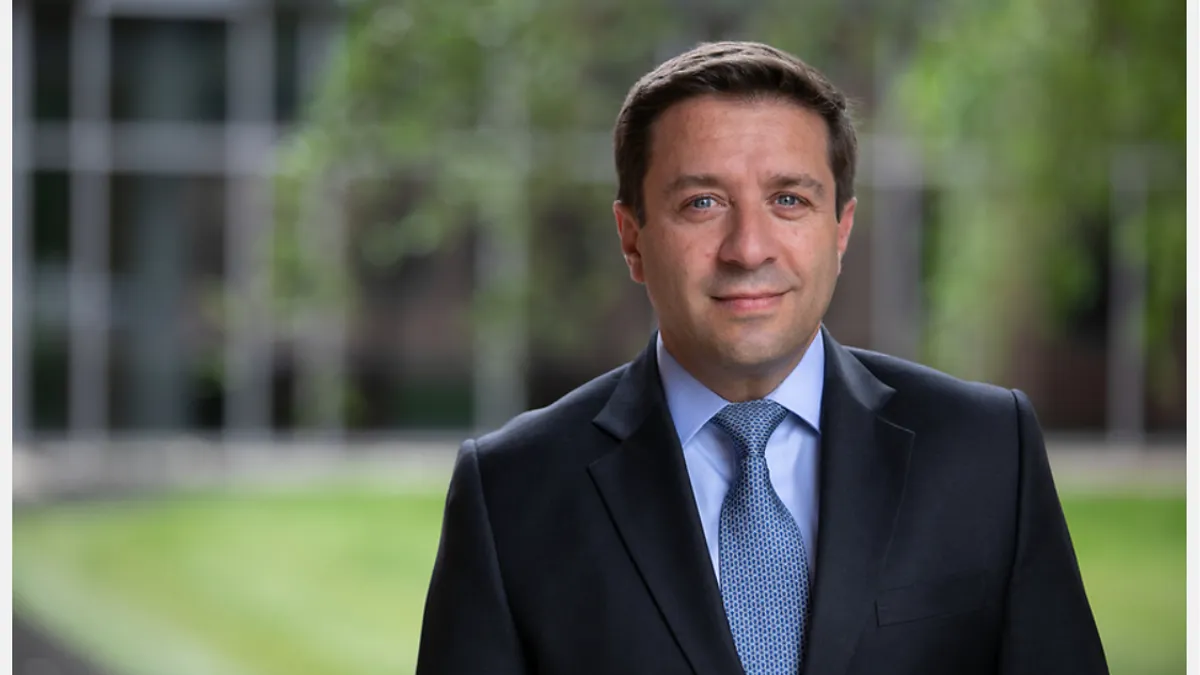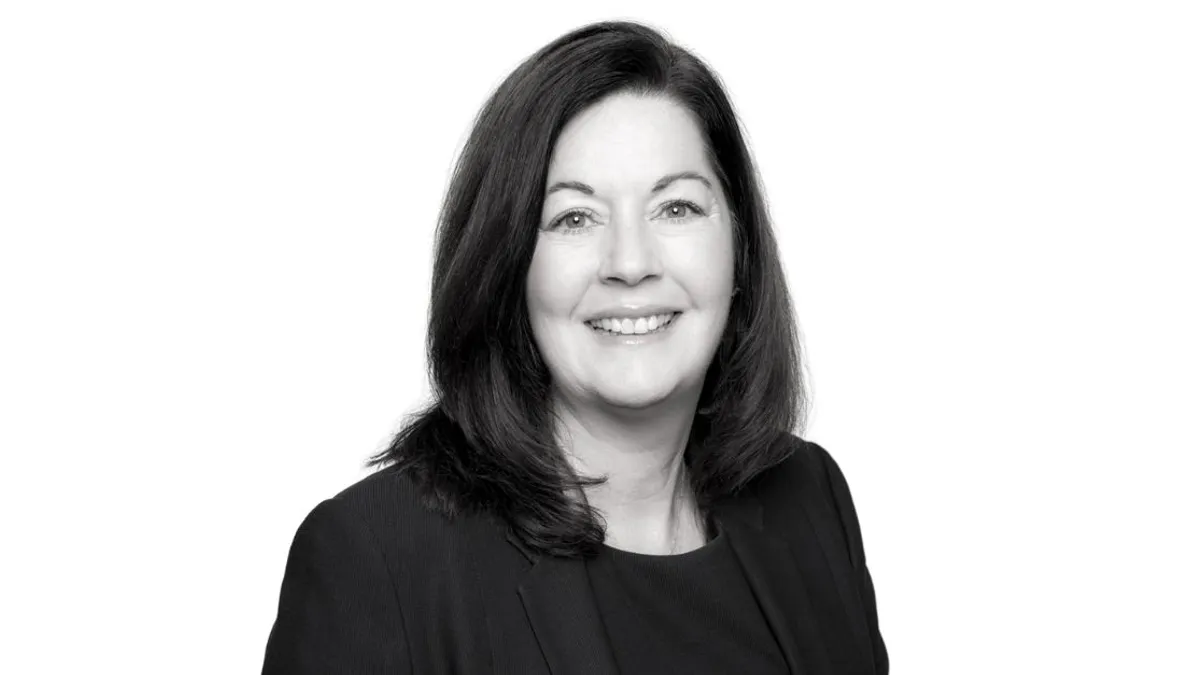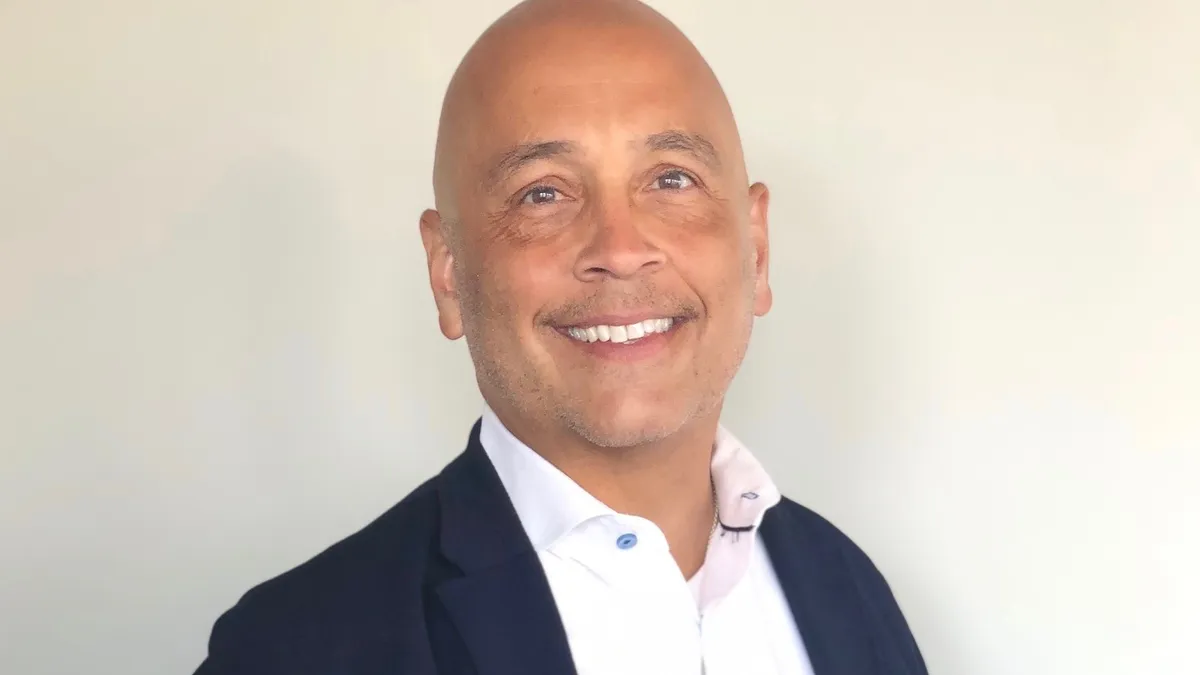Welcome to First 90 Days, a series dedicated to examining how pharma executives are planning for success in their new role. Today, we're looking at Editas Medicine’s CEO, Gilmore O'Neill, who stepped into the role at the beginning of June to take the gene editing company to the next level in its biotech journey.
Editas Medicine's new CEO, Gilmore O'Neill, has hit the ground running to move the company forward into its next phase. Less than a week after taking the helm at the start of this month, O'Neill brought Editas to the dealmaking table, signing a licensing deal to provide gene editing tools to German immunotherapy company Immatics.
PharmaVoice caught up with O'Neill just as he was preparing to step into the shoes vacated by former CEO Jim Mullen and start in his new role June 1. The succession comes at a crossroads for the gene editing company as its treatment candidates move from preclinical and proof-of-concept stages into clinical trials and beyond.
Editas uses CRISPR technology as well as RNA chemistry to target genetic conditions causing childhood blindness and sickle cell anemia, among other diseases. And O'Neill, who most recently served as head of R&D and chief medical officer at Sarepta Therapeutics, and before that a clinical development leader at Biogen, has driven some very successful medicines through trials, including blockbusters Tecfidera and Spinraza.
But even with a long list of scientific accolades, he approaches the CEO role — his first — with humility, a willingness to learn and a few new muscles to flex.
"I need to find balance," O'Neill says. "Sometimes, one of the challenges is making sure that as you grow new muscles as a new CEO like myself, developing more expertise in communication, investors, etc... At the same time you must not over flex muscles that are already matured like R&D."
Here, O'Neill discusses his approach to leadership, his vision for the next phase of the company's evolution, and what new skills he will need moving to the top of the C-suite.
This interview has been edited for style, length and clarity.
PharmaVoice: What do you do in the weeks leading up to that first day?
Gilmore O'Neill: What I've been doing leading up to the first day has been about going into even deeper diligence on the diligence I did before I joined the organization. That has been about understanding more about the nuances of the strategy, the operating model and the culture, and getting to know people, because in the end, the people in the organization [are] the talent and they're the people with the creativity who are going to work together to continue to build the culture that will be needed to deliver on the strategy.
Another task is to hire a chief medical officer, which is a critical part of our strategy, and the execution there will be leaning in on business development.
What new directions do you want to take the company?
There's a very unwise CEO that actually knows all the answers before they've actually arrived, and that CEO is asking for trouble. The reality is that I'm a new CEO, and as a result, the executive leadership team is a new team. I will be spending a lot of time working with that team in a very rigorous listening mode.
What I can say with confidence is that from day one, there will be significant focus — and this impacts the direction of the company — on working with the development organization to execute on the clinical trials that we've activated. That includes our ocular ex vivo program for LCA10 [a genetic eye disease], and sickle cell anemia.
The strategy is about ensuring that a company of our size balances appropriately its bandwidth and its core internal capabilities with the potential of the technology that it has — and that's a massive potential.
The nature of a biotech company like Editas is that it needs to change over time to reflect where it is in the development process. What kind of edge does your experience in bringing major drugs to market give you at Editas?
The timing is nice for me and for Editas, because the company has now moved into the clinic. In the end, my experience is in essentially moving scientific ideas or early products into humans. Editas is a drug development company, and our North Star is that we are creating drug products that will be commercialized to benefit people using a technology that allows us to treat diseases that were previously untreatable.
My key job, and the reason that I'm here with my experience at this point in the company, is that it is pivoting to be a drug product company.
You're going from head of R&D and chief medical officer to CEO — can you talk about the differences in how you approach those roles?
The great thing about having sat in the C-suite is that any member of an executive leadership team has to actually look at the world through the lens of the entire enterprise. Ultimately, they all are looking at the end game, which is to bring commercial drug products to patients. Because if we can't commercialize, if we can't develop a drug, get it registered, approved, bring it to market, everything else is a waste of time.
What's different about the CEO, obviously, is that you are now 100% focused on the entire enterprise — you're not running a specific division. And there is both a significant focus on the internal elements around culture, strategy, operating models, and making sure that they are appropriate to the company at the stage of its development.
I need to find balance and I need to focus on areas that I may be less experienced with, working much harder on critical things like strategy and culture.
What kind of leadership advice have you gotten from former CEO Jim Mullen and other mentors during this transition?
They've told me, ‘Don't show up thinking you have all the answers on the first day — make sure that you are actually listening very carefully to the people around you to make early decisions that will be wins for the organization.’
Also, to understand that it's going to take three to six months to build that trust in your leadership and your organization, and make sure that you are very conscious and intentional about what you do in the first, second and third month to build that trust.
What are the biggest hurdles for Editas — the tallest mountains to climb?
The biggest mountain, which is true for all biopharma, is that what we're trying to do with biology, by nature of evolutionary development, is incredibly complex and certainly unpredictable. And so we have to not just plan for success, but plan for difficulties or sometimes unforeseen complications.
But I'm optimistic because I've come to strongly believe in my 20 years in the industry, and frankly, in the many years before that, that if you think rigorously about the science and if you are humble in front of nature and manage risk in an anticipatory manner as you envision the incredible possibilities of the therapeutic platform, we can overcome all of these things to relieve human suffering.
How would you characterize yourself as a leader, particularly at a company with such cutting-edge science needing to embrace some changes ahead?
I suppose I would characterize myself as a learning teacher, somebody who is constantly trying to learn both what the science is telling me and what the people around me are saying, and one who's also going to try and teach around development. I believe strongly in empowering everybody to grow and succeed in carrying out the tasks that are given to them.
What are you excited about at Editas?
I'm most excited about the opportunity to transform and move what is an incredibly robust set of scientific knowledge and turn that into drug products for patients. What excites me even more specifically at Editas is the opportunity to work with people who have clearly developed core expertise in areas such as guide RNA; design, synthesis and chemistry; nucleus enhancement; and a manufacturing group that is really moving the dial up on scale and quality of the product.
Finally, one of the things that really excites me is the opportunity to broaden the bandwidth by doing a lot of deals on the licensing and partnering side, because I think that's going to be critical to any path in maximizing the value of this science to patients, prescribers, caregivers and investors.



